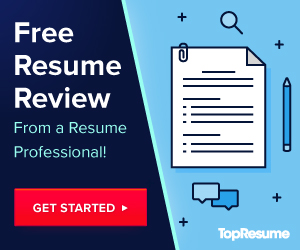You’ve probably done this (or have a friend or colleague who has). You’re in an extended job search but can’t get the interviews or offers you need. Running out of time and money, you take a lower-level role just to cover the bills and keep a roof over your head.
Watch: Fighting Against Underemployment
The problem, though, is that once you do this, it gets harder to return your career to its pre-search trajectory and salary. Recruiters and hiring managers will tend to perceive your candidacy as tarnished and you’ll find it more difficult than ever to land interviews, let alone win job interviews. Welcome to the Underemployment Trap!
How To Avoid The Underemployment Trap
The simplest way to avoid the trap, of course, it to conduct such an efficient job search that you have more than enough interviews to produce the offers you want. Sound easy? It’s not, but there is a science to all this job search stuff that makes it much easier to create the results you want, if you take the right action steps up front.
If you want to generate enough great job opportunities in your career search to avoid having to accept a lower-level position, follow these three key action steps:
1. Devise A Smart Job Search Strategy
First, devise a smart job search strategy based on your career targets, brand, and achievements that enables you to access 200-300 potential opportunities in 3-6 months. Why 200-300? Because a job search is a bit of a numbers game – it takes an average of seven job interviews to produce one job offer and outreach to 200-300 potential opportunities to generate those seven interviews. If you’re conducting a full-time search, you should be able to make your 200-300 contacts in 90 days; if you’re in a part-time search, then you’ll likely need six months or more to make that happen.
But what constitutes a smart job search strategy? In my book, a savvy search strategy includes:
Clear job search targets that define the position levels, titles, companies, industries, and geographic areas you are seeking. Enough targets. If there are fewer than 200-300 targets in your preferred geographic areas you may not be able to make enough contacts to generate enough interviews or offers. The right search tactics. There are specific methodologies you can use to promote your candidacy. Which ones best suit your career level, circumstances, personality, and available search time? Which mix of tactics will best enable you to penetrate the unpublished or Hidden Job Market where 85% of all jobs are, rather than belaboring pursuit of the published or Visible Job Market where everyone else is competing for 15% of available jobs?
Learn more about what constitutes a smart job search strategy.
2. Align Your Career Communications With Your Strategy
Second, align your career communications tools with your job search strategy, brand, achievements, and career story. Once your strategy has been clearly defined, it will be self-evident which career communications tools you need. Most candidates need a resume and LinkedIn profile at a minimum.
If you plan to do a lot of networking, for example, then you also need a networking document to help guide your contacts in helping you gain access to influencers, hiring executives, and companies. Once upon a time, resumes were the networking tool almost everyone used, but these days resumes are “too much too soon” for most networking situations. In these cases, a brand bio or one-page networking resume (sometimes also referred to as a marketing brief) is a much smarter networking tool.
After identifying which career communications tools you need, your next task is to align their positioning with your career brand and achievement history. Also, make sure your resume uses the right structure. If you’re already underemployed, for example, your resume structure may need to be adapted to help you tell your career story more effectively.
This means that, at the very least, your resume needs:
A title and tagline that showcase your brand. A keyword-driven summary that highlights your brand and achievement summary. A resume structure that presents your career story in a favorable way. A strong complement of quantified achievements that prove your ability to perform the level and type of roles you are pursuing.
3. Align Your LinkedIn Profile With Your Strategy
Third, align your LinkedIn profile with your job search strategy, brand, achievements, and career story. Because 96% of recruiters are utilizing LinkedIn as their #1 candidate sourcing tool, you can’t afford to be invisible or play small on this social networking platform. Used wisely, LinkedIn has features that can supercharge your search.
Initially, your LinkedIn focus should be to build a strong profile and then to forge a strong network. Once these two pillars are in place, you’re ready to employ “push” and “pull” marketing techniques. Push job search self-marketing involves gently bringing your candidacy to the attention of key people, such as recruiters, hiring executives, and industry influencers. Pull job search self-marketing uses social media to magnetize or attract recruiters and hiring executives to your profile. I recommend using a mix of both techniques in your search to maximize your results.
An underemployment-proof LinkedIn profile needs:
A headline that positions you search for the range of jobs, levels, and industries you’re pursuing. If you’re looking for roles that range from the senior director to VP level, for example, your LinkedIn positioning should make that clear. A summary that presents your career story and brand in abbreviated form. Industry-aligned keywords in every possible section. A work history structure that presents your chronology to its best advantage. Note this is not always the same structure you use for your resume. Evidence of your expertise in the form of a full Skills & Expertise list, additional LinkedIn sections as appropriate, and supplemental documents or media that flush out your brand and encourage recruiters, industry influencers, and hiring executives to get to know you.
The sad truth is that if every job search candidate did all of the above dramatically fewer professionals would become trapped in underemployment. If you’d like to be one of the “lucky” ones, be prepared to conduct a smart career search with the right strategy, the right tools, and the right implementation. You can do this.

About the author
A 15-time, award-winning resume writer, Cheryl Lynch Simpson serves mid-career to senior executives as a credentialed resume writer (ACRW), LinkedIn strategist (COPNS), and Get Clear, Get Found, Get Hired (G3) coach. Like her advice? Check out her website, ExecutiveResumeRescue.com for a complimentary copy of her popular Polish Your Profile LinkedIn presentation, or follow her on Twitter!
Photo Credit: Shutterstock












